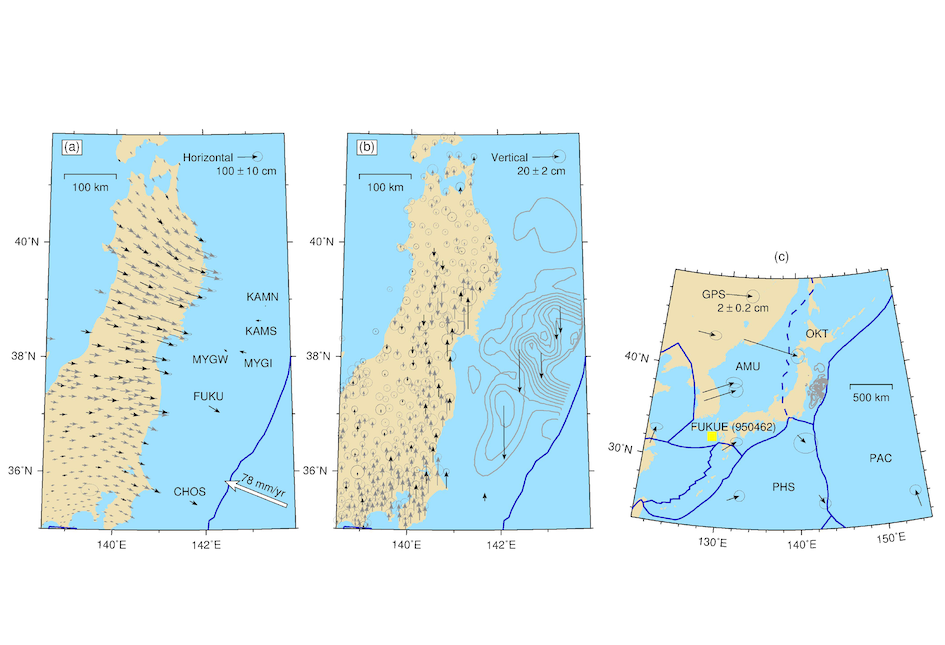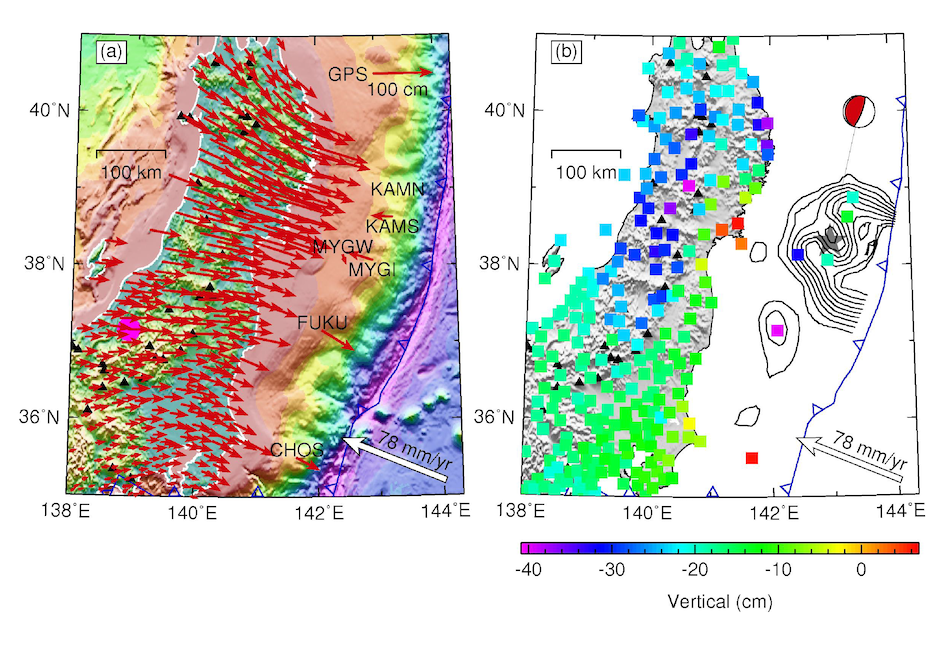


The concept of a weak asthenospheric layer underlying Earth’s mobile tectonic plates is fundamental to our understanding of mantle convection and plate tectonics. However, little is known about the mechanical properties of the asthenosphere (the part of the upper mantle below the lithosphere) underlying the oceanic crust, which covers about 60 per cent of Earth’s surface. Great earthquakes cause large coseismic crustal deformation in areas hundreds of kilometres away from and below the rupture area. Subsequent relaxation of the earthquake-induced stresses in the viscoelastic upper mantle leads to prolonged postseismic crustal deformation that may last several decades and
Read More
Understanding of postseismic deformation following great subduction zone earthquakes is complicated by the combined effects of viscoelastic relaxation of earthquake-induced stresses in the upper mantle and time-dependent afterslip on the megathrust. We integrate geodetic observations and constraints on afterslip from small repeating earthquakes on the megathrust to better distinguish contributions from these two postseismic processes. We have developed a three-dimensional, spherical viscoelastic finite element model to study the postseismic deformation of the 2011 Mw9.0 Tohoku earthquake that has been recorded at unprecedented high resolution in space and time. We model s
Read More
A better understanding of fluid-related processes such as poroelastic rebound of the upper crust and weakening of the lower crust beneath the volcanic arc helps better understand and correctly interpret the heterogeneity of postseismic deformation following great subduction zone earthquakes. The postseismic deformation following the 2011 Mw9.0 Tohoku earthquake, recorded with unprecedented high resolution in space and time, provides a unique opportunity to study these ‘second-order’ subduction zone processes. We use a three-dimensional viscoelastic finite element model to study the effects of fluid-related processes on the postseismic deformation. A poroelastic rebound (
Read MoreCopyright © Geodynamics Research Center,USTC All Rights Reserved